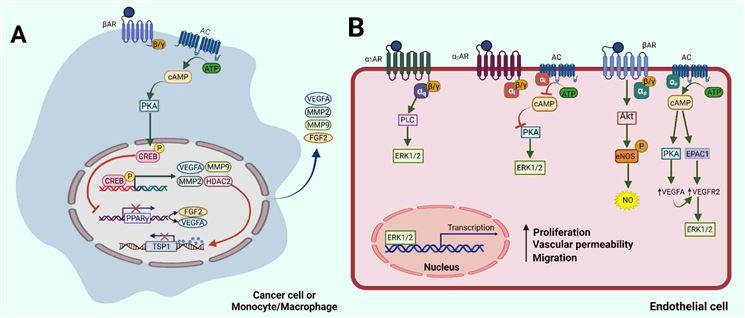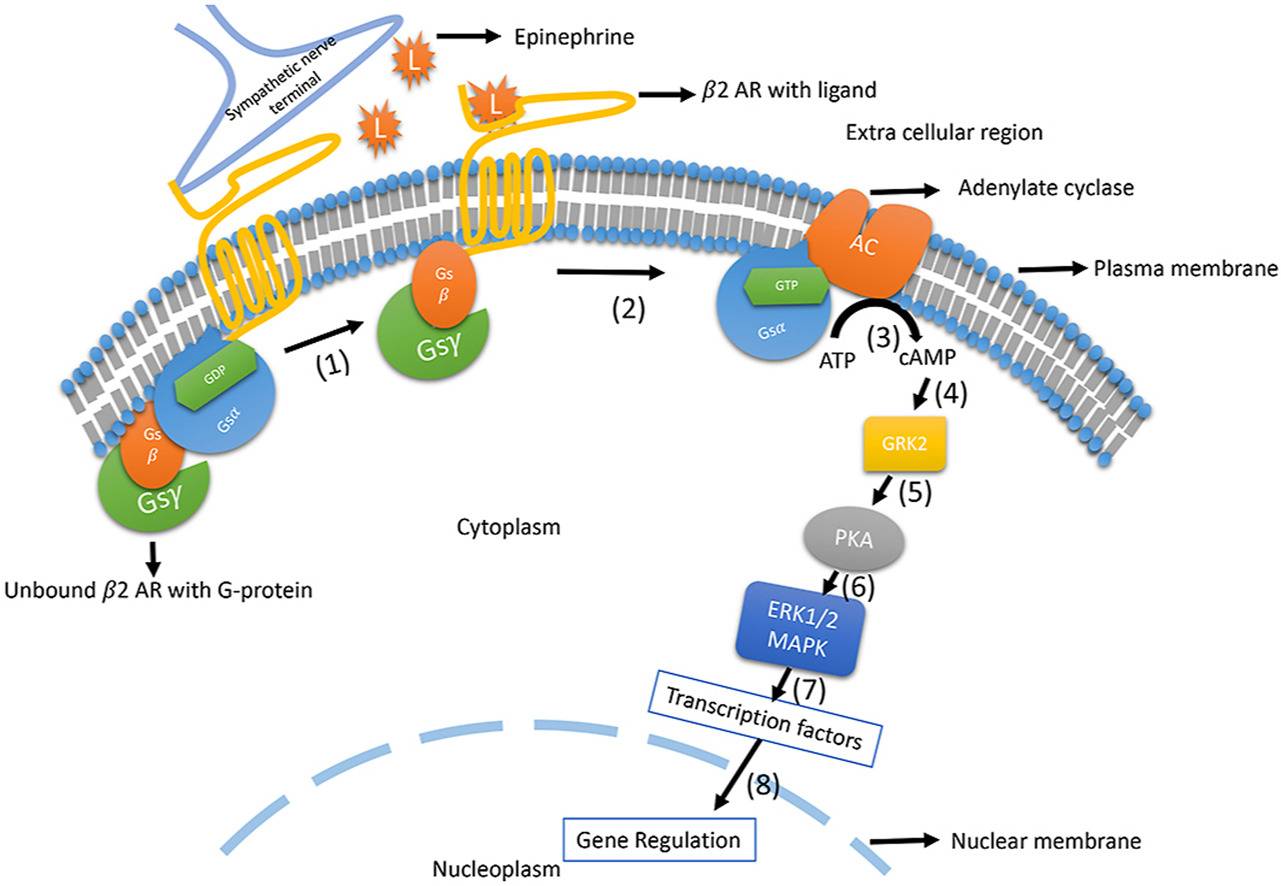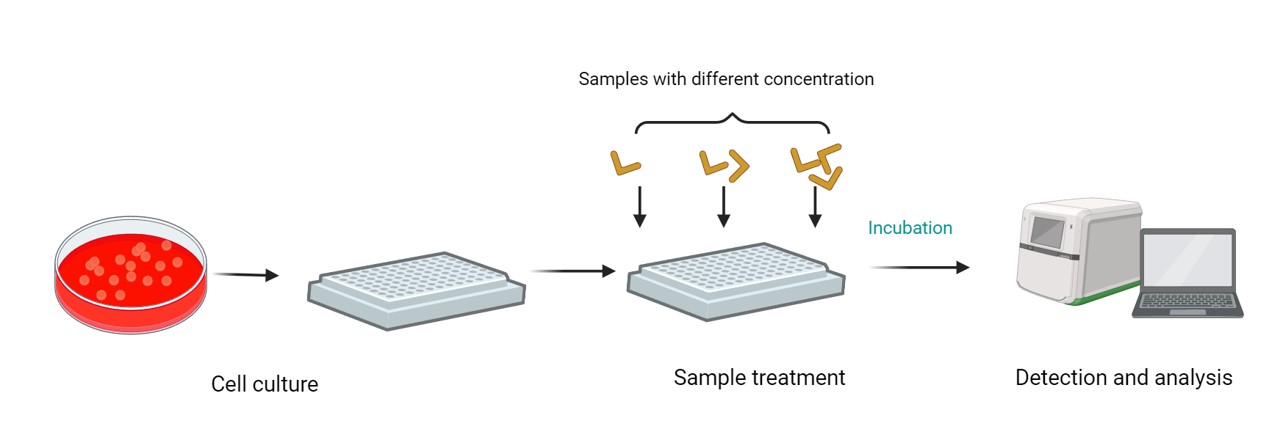Hi-Affi™ In Vitro Cell based Adrenergic Receptor Functional Assay Service
Adrenergic Receptors with Prospect
Adrenergic receptors (ARs), or adrenoceptors, are a group of GPCRs distributed throughout every part of the body. They play a vital role in regulating diverse physiological processes in humans. Recent research indicates that therapeutic targeting by modification of the adrenergic system could function as an effective systemic therapy for cancers, particularly bladder cancer. Consequently, comprehending the function of adrenergic receptors has great significance for its application in drug development of cancer therapy.
 Fig.1 Adrenergic receptors-mediated signaling in endothelial and cancer cells.1
Fig.1 Adrenergic receptors-mediated signaling in endothelial and cancer cells.1
Our Hi-Affi™ In Vitro Cell-based Adrenergic Receptor Functional Assay Service
Creative Biolabs provides rapid and effective Hi-Affi™ in vitro cell-based adrenergic receptor functional assay service to support global customers' diverse needs. Our Hi-Affi™ in vitro cell-based adrenergic receptor functional assay services are conducted by exposing samples to ligands in a concentration gradient and then measuring calcium flux and protein activities of downstream signaling. We provide a wide range of services that include, but are not restricted to, the examination of signaling pathways, which may include the recruitment of adaptor protein and calcium flux-mediated G protein activation. Creative Biolabs is dedicated to presenting the desirable outcomes for global customers.
 Fig.2 Adrenergic receptor signaling in neuroimmune communication.2
Fig.2 Adrenergic receptor signaling in neuroimmune communication.2
The breadth of Our Hi-Affi™ In Vitro Cell-based Adrenergic Receptor Functional Assay Service
 Fig.3 The workflow of our Hi-Affi™ in vitro cell-based adrenergic receptor functional assay service.
Fig.3 The workflow of our Hi-Affi™ in vitro cell-based adrenergic receptor functional assay service.
|
|
|
|
Work with Creative Biolabs

Feel free to get in touch with us if you have any questions concerning our Hi-Affi™ in vitro cell-based adrenergic receptor functional assay service. We are eager to begin collaborating with customers from all over the world.
Frequently Asked Questions
Q1: What is the difference between epinephrine & adrenaline?
A1: Epinephrine functions as both a neurotransmitter and a hormone, however, it is mostly a hormone. Adrenaline, or epinephrine, plays a significant role in the body's fight-or-flight response. It is also used to treat a variety of life-threatening illnesses as a medicine.
References
-
Xanthopoulos, Athanasios, et al. "A systematic review on the role of adrenergic receptors in angiogenesis regulation in health and disease." International Journal of Translational Medicine 1.3 (2021): 353-365.
Distributed under Open Access License CC BY 4.0. The original image was modified by extracting and regrouping, and the title was changed to “Adrenergic receptors-mediated signaling in endothelial and cancer cells”. -
Chhatar, Sushanta, and Girdhari Lal. "Role of adrenergic receptor signaling in neuroimmune communication." Current Research in Immunology 2 (2021): 202-217.
Distributed under Open Access License CC BY 4.0, without modification.
For Research Use Only.
